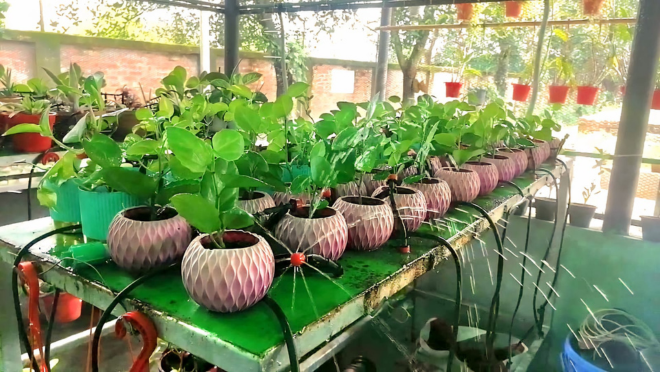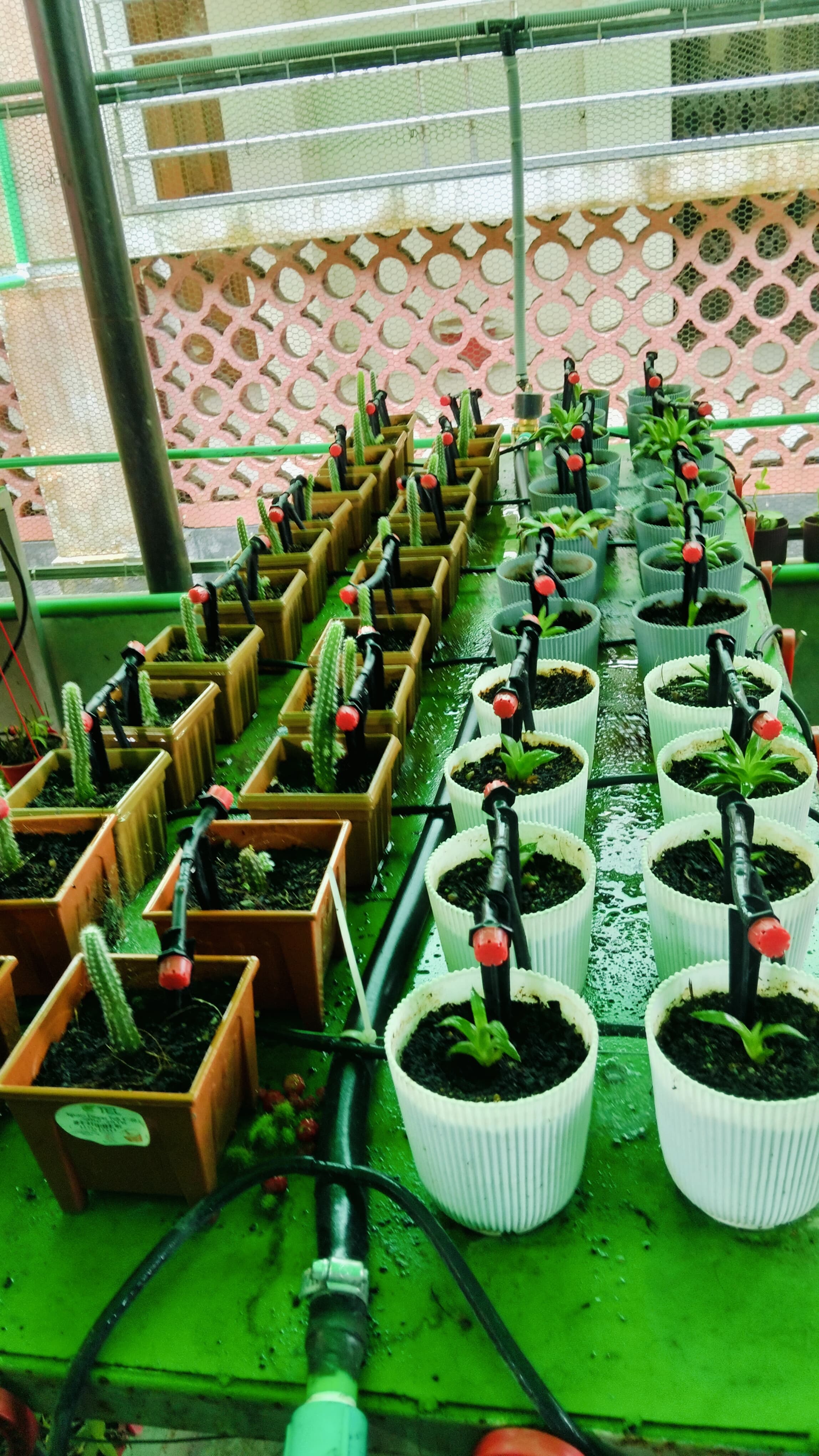IoT in agriculture: A beacon for Bangladesh’s farming future
IoT in agriculture: A beacon for Bangladesh’s farming future

Imagine a Bangladeshi farmer standing at the edge of his rice paddies, anxiously watching the sky, uncertain if the monsoon will nourish his crops or destroy them. This daily uncertainty reflects the broader reality of agriculture in Bangladesh, where millions depend on the land for their livelihood but face mounting challenges with every season.
Despite growing industrialisation, agriculture remains a cornerstone of the Bangladeshi economy. In FY 2022–23, it contributed over 12% to the national GDP and employed approximately 45.4% of the workforce, particularly in rural areas. For countless smallholder farmers and labourers, agriculture is not just a livelihood; it’s a lifeline.

However, the sector faces mounting challenges: shrinking arable land, inefficient irrigation, improper input use, lack of real-time data, and increasing vulnerability to climate change through floods, droughts, and cyclones. In this context, the Internet of Things (IoT) emerges as a beacon of hope, offering smart, data-driven solutions to transform traditional farming.
What is IoT in agriculture?
The Internet of Things (IoT) refers to a network of interconnected physical devices—like sensors, drones, and machines—that collect and exchange data via the internet. Coined in 1999 by Kevin Ashton, the term has become central to modern innovation across industries, including agriculture. Think of it like giving “eyes”, “ears”, and even “voices” to inanimate objects so they can gather information about their surroundings or their own status and then communicate that information, often to a central system or even to each other.
In farming, IoT enables the creation of a smart, data-driven ecosystem often called “smart agriculture.” The Internet of Things (IoT) offers a powerful solution to revolutionise Bangladeshi agriculture and address these challenges head-on.
Core IoT components and devices
1. Sensors—The eyes and ears of the farm
Sensors are critical for capturing real-time data from the field. Common types include:
Soil sensors: Measure moisture, temperature, and nutrient levels to guide irrigation and fertilisation.
Weather sensors: Track hyperlocal climate data—temperature, rainfall, humidity, and wind speed—for better planning.
Crop sensors: Use tools like NDVI (Normalised Difference Vegetation Index) to assess plant health and detect stress early.
2. Connectivity—The nervous system
Once data is collected, it must travel from the field to the cloud. This is made possible through:
Wi-Fi and cellular (3G/4G/5G): For farms with existing infrastructure.
LoRaWAN (Long Range Wide Area Network): Ideal for low-power, long-range connectivity in rural areas.
Satellite Communication: Enables remote monitoring in areas with no network coverage.
3. Data analytics and cloud platforms—the brain
Collected data is transmitted to cloud platforms, where it’s stored, analysed, and turned into actionable insights. Machine learning algorithms help detect patterns, forecast yields, and suggest interventions.
4. Smart Devices and automation – The hands and feet
Based on insights from the cloud, IoT systems can automate farm operations using:
Smart Irrigation Systems: Automatically adjust watering based on soil moisture levels.
Drones: Perform aerial surveys, monitor crop health, and spray inputs with precision.
GPS-enabled Machines: Track equipment movement and improve field efficiency.
Mobile Apps: Give farmers remote access to live data, alerts, and control systems—all from a smartphone.
IoT applications in Bangladesh’s agriculture

In Bangladesh’s evolving agri-tech landscape, iFarmer and Drip Irrigation Bangladesh Limited (DIBL) are emerging as frontrunners in leveraging IoT for smarter, more inclusive farming.
iFarmer operates across 19–35 districts, serving over 60,000 farmers—nearly half of them women—through a data-driven ecosystem.
It has facilitated more than Tk600 crore (approximately $70 million) in financing for farmers and agri-entrepreneurs, cutting the cost of capital by up to 40%—a significant breakthrough for smallholder farmers traditionally excluded from formal credit systems.
At the heart of iFarmer’s success is its suite of IoT-enabled tools. The Intelligent Soil Sensor (ISS) monitors pH, moisture, and nutrient levels in real-time, enabling precise fertiliser use and improved crop management.
With the help of satellite data and vegetation indices like NDVI, farmers receive early warnings about water stress, disease outbreaks, and nutrient deficiencies. These tools have helped boost rice productivity by up to 30% in many pilot areas.
In livestock farming, iFarmer’s Cowdy device—often referred to as the “Fitbit for cows”—monitors animal health and reproductive cycles using wearable tech and solar-powered routers. (Sources: iFarmer, LightCastle Partners)
DIBL, a homegrown initiative, focuses on precision irrigation using IoT-enabled smart controllers and drip systems.
Tailored to local conditions, its solutions automate irrigation, mitigate climate risks, and empower small farmers with sustainable water management tools. Both initiatives reflect a growing shift towards digital, data-informed agriculture in Bangladesh—essential for achieving resilience and food security in a climate-challenged future.
Agri-bots
According to a systematic review on IoT adoption in agriculture by Atiqur Rahman Sunny et al., agri-bots are increasingly transforming farming—from soil preparation to harvesting—by reducing labour costs, improving efficiency, and saving time.
The study highlights advancements in robotic platforms capable of autonomous navigation, crop monitoring, and even phenotypic data collection. It also discusses the future of agricultural robotics, including training needs, industry challenges, and the socio-economic impacts of automation. (Source: Adoption of IoT in Agriculture—A Systematic Review)
Future horizons
IoT systems rely on data-driven architecture, and integrating them with AI can enable smarter forecasting and decision-making in agriculture. Further research on this integration is essential for sustainable farming.
Bangladesh, already impacted by climate change and intensive cultivation, must adopt these technologies while modifying harmful traditional practices to ensure environmental resilience (Syeed et al., 2022).
Precision Agriculture (PA) is another step forward. By using sensor data on soil, moisture, nutrients, and yield, PA enhances productivity and environmental protection (Lee et al., 2010). This is especially relevant for densely populated countries like Bangladesh, where cost and resource optimisation are critical.
Successful implementation also depends on informed and ethical leadership. Responsible leadership fosters inclusive, sustainable development and addresses both ethical and socio-economic challenges in agriculture (Noor-E-Sabiha & Rahman, 2018). Developing such leadership is key to realising the full potential of smart farming in Bangladesh.
As Bangladesh faces growing agricultural challenges, the integration of IoT offers a promising path forward. By turning farms into intelligent systems, IoT enables data-driven decisions, boosts productivity, and builds resilience against climate and resource pressures. Though obstacles remain—like affordability and digital literacy—IoT stands as a beacon of innovation, lighting the way towards a smarter, more sustainable future for Bangladeshi agriculture.


